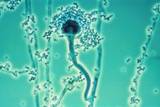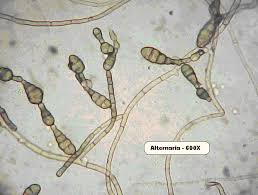
Choose your most prominent symptom:




Fungus and Sinusitis
I have been surprised at how many of my patients are asking about the relationship of fungus to their sinus problems. Most of the questions stem from a report by the Mayo Clinic several years ago and the resultant media coverage. They basically concluded that most chronic sinusitis was fungus related.
Suffice it to say that there is a lot that we don't know about chronic rhino-sinusitis (CRS). CRS almost certainly has several different specific etiologies despite a common final presentation. Many cases are undoubtedly multifactorial. It has now clearly been shown that fungus plays a much more frequent role in the pathogenesis than we had ever believed. This, the most common type of fungal sinusitis, is termed "Allergic Fungal Sinusitis". It is actually not related to allergies, but the name has remained as our understanding of it has changed. Let’s examine a few things about sinusitis and the role fungus plays in it.
What is Fungal Sinusitis?
Fungal sinusitis comes in several well defined forms, and perhaps in a few forms that we are just beginning to learn about. They fall into 4 categories:
1) The most apparent type is the invasive fungal infections such as invasive mucor; an immunocompromised patient develops a life threatening invasive fungal infection. I have never seen such a case.
2) The next most obvious situation is called a fungus ball. It usually presents as one sinus, usually the maxillary, with a ball of fungal hyphae, not invasive and with minimal inflammatory response. The symptoms are varied, usually not severe, and the treatment is removal of the fungus ball. This is fairly common and usually happens in just one sinus.
3) About 7% - 10% of patients with chronic sinusitis who come to surgery have a somewhat clearly defined process that has been termed Allergic Fungal Sinusitis. This process is an inflammatory reaction to non-invasive fungal growth. Fungal growth that everyone has, but only some react to.
The process is not technically just an allergy. There are more branches of the immune system involved than is typical with common inhaled allergies. The problem occurs when certain people's immune system "over reacts" to mold spore, such as Alternaria and others. These fungal species are types of common mold. Some people react in a way that leads to inflammation, polyp formation, and secondary infection. The reaction is led by lymphocytes and eosinophils and occurs in the mucous, not in the nasal tissues. The most characteristic finding is a large amount of so called "allergic fungal mucin". The material in the involved sinus is a thick, sticky, tenacious goo that contains fungal hyphae and eosinophil breakdown products noted on cytology. Fungus can often be cultured. The patients almost always have polyps, and the process is often unilateral.
The CT scan is often characteristic with areas of mixed density in the sinus, sort of a marbled appearance. The treatment involves surgical debridement of the allergic fungal mucin, creating wide drainage pathways, perioperative oral steroids, and aggressive post operative care with frequent cleanings, using oral steroids for any signs of recurrence, and long term use of antifungal nasal rinses or sprays.
The prognosis is not as good as it is for most other causes of chronic sinusitis in that a higher percentage of patients have recurrence and more patients eventually undergo revision surgery to remove buildups of fungal material and polyp recurrences. Oral steroids have a remarkable and dramatic effect in this process and the key to therapy is adequate surgery and balancing the concerns of oral steroid use with the dramatic help they provide this process.
Topical antifungals have recently been shown to help this problem and I am using them routinely in patients with clear cut cases of allergic fungal sinusitis.
4) Much of the sinusitis that ends up requiring surgery, but that isn't clearly Allergic Fungal Sinusitis, has recently been shown to be of the same nature as the clear cut Allergic Fungal Sinusitis but just a lesser presentation. This information is helpful because it not only helps us understand why some people don't do as well after surgery as we would hope, but it also helps us know what to do when such patients have problems post operatively.
Several uncertainties exist in our understanding of fungal sinusitis:
1) Many but not all cases of sinusitis that fit the criteria of chronic sinusitis can be cleared up completely with long term appropriate antibiotics and other ancillary medicines. So how can a fungus be the root cause here?
The current explanations include the theory that damage is done to the mucous membranes by the fungus problem, and then bacteria secondarily invade and cause infections. The other explanation is basically an attempt to redefine this type of problem as "sub-acute sinusitis", and try to seperate it out from "chronic sinusitis" which the proponents are trying to categorize as entirely fungal in origin.
2) In many cases of clearly diagnosed allergic fungal sinusitis, the problem is unilateral. If the problem is a systemic host reaction to ubiquitous fungus, why would it so often be unilateral? Anatomic variations seem to play a role here. This is perhaps why we can clear up chronic sinusitis with surgery. If the mucous can flow more freely, the fungus doesn't have time to reproduce, so the fungal antigen load is less.
3) Is this reaction to Alternaria and similar fungi genetically predisposed?
4) Is there some environmental condition that causes it to occur?
5) Once someone has developed this immune response to Alternaria, is it permanent?
6) Can the response wax and wane over time?
Summary:
Chronic sinusitis is a process with multiple etiologies. An important Mayo study and recent experiments show that an immunologic reaction to airborne fungus is a much more common eitiology than was previously thought. From a practical standpoint, the new knowledge tells us that antifungal rinses or sprays can be helpful even in patients who do not have clear cut Allergic Fungal Sinusitis.

Is your problem from mold?
Is fungal sinusitis allergy?
What is mold spore allergy?
Let us help you figure it out.
